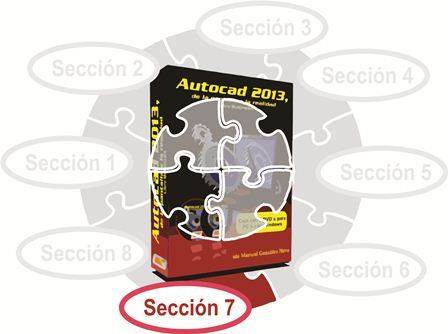Publishing and Printing with AutoCAD - Seventh 7

30.2 Layout Styles
Layout styles define specific criteria with which to print the objects based on their color or the layer in which they are. That is, we can create a layout style that indicates that all green objects are printed on our plotter in that or another color, but also with a line style, fill and line termination, different from the one originally has in the drawing.
Trace styles reside in tables that are saved as files in the Plot Styles folder. We can therefore create many tables and in each one of them several styles, practically without limit.
There are two types of tables, the "color dependent" ones, where we can create drawing styles based on the color of the object and the "Saved Style" ones, which we can apply to the layers. Thus, when we configure the page, we choose the layout style table to apply, the printing criteria it contains will prevail when printing the presentation.
Obviously, we can not select any styles table at the time of setting the presentation page. In those cases, the default table will simply be applied, where each object will be printed as it is in the drawing and depending on the configuration that we have given to the printer or plotter according to the previous section.
Before creating your own plot style, we must consider that in the Options dialog box, in the "Plot and publish" tab, we can select several elements to determine the behavior of the plot styles, for example, if they are going to affect to objects by color or by layer, and what default style to apply to new drawings. Let's see it graphically.
To create a plot style table, we can use the “Add/edit plot style tables” button, which can be seen in the previous video; we can also use the Print-Plot Style Manager menu. Any of these routes takes us to the “Plot Styles” folder, where, as can be seen, we can use the wizard to create tables, or double-click the existing ones to edit them.
Once you have created the layout style table, whose icon also appears in the folder with the name that we have given in the wizard, we can edit it. In the dialog box to edit the layout styles, it is indistinct to use the Table view or Form view tab, in any of them we can create new styles indicating the color, pen, type and thickness of line, its completion and fill which must be applied to the object according to its color or layer, play with it, you will understand quickly.
As we will see in the following section, we can easily change the style table when configuring pages, so that the same drawing can have several presentations, in each one of them we can use various page configurations and in these we can select one of several layout style tables. As the reader will understand, this creates an almost absolute flexibility to generate print specifications. It saves a lot of work if these styles are used with order, but it can create confusion (and, therefore, delay of time), if a method is not followed for its use.
30.3 Page Setup
The last step before printing is to set the page to be used with the layout designed. Here, as already mentioned, we summarize the whole procedure above, since we select the printer or plotter that we configure at the 30.1 point and indicate the plot style table of the 30.2 point, but in addition, we can select other paper sizes and some other parameters. With this dialog, in addition, we can save the page configuration with a name, so that we can return to it without having to establish the data again.
To create the page setup we can use the Print-Page Setup menu. The page setup will be associated with the presentation that is currently active, so do not forget to go to that presentation before using the menu.

